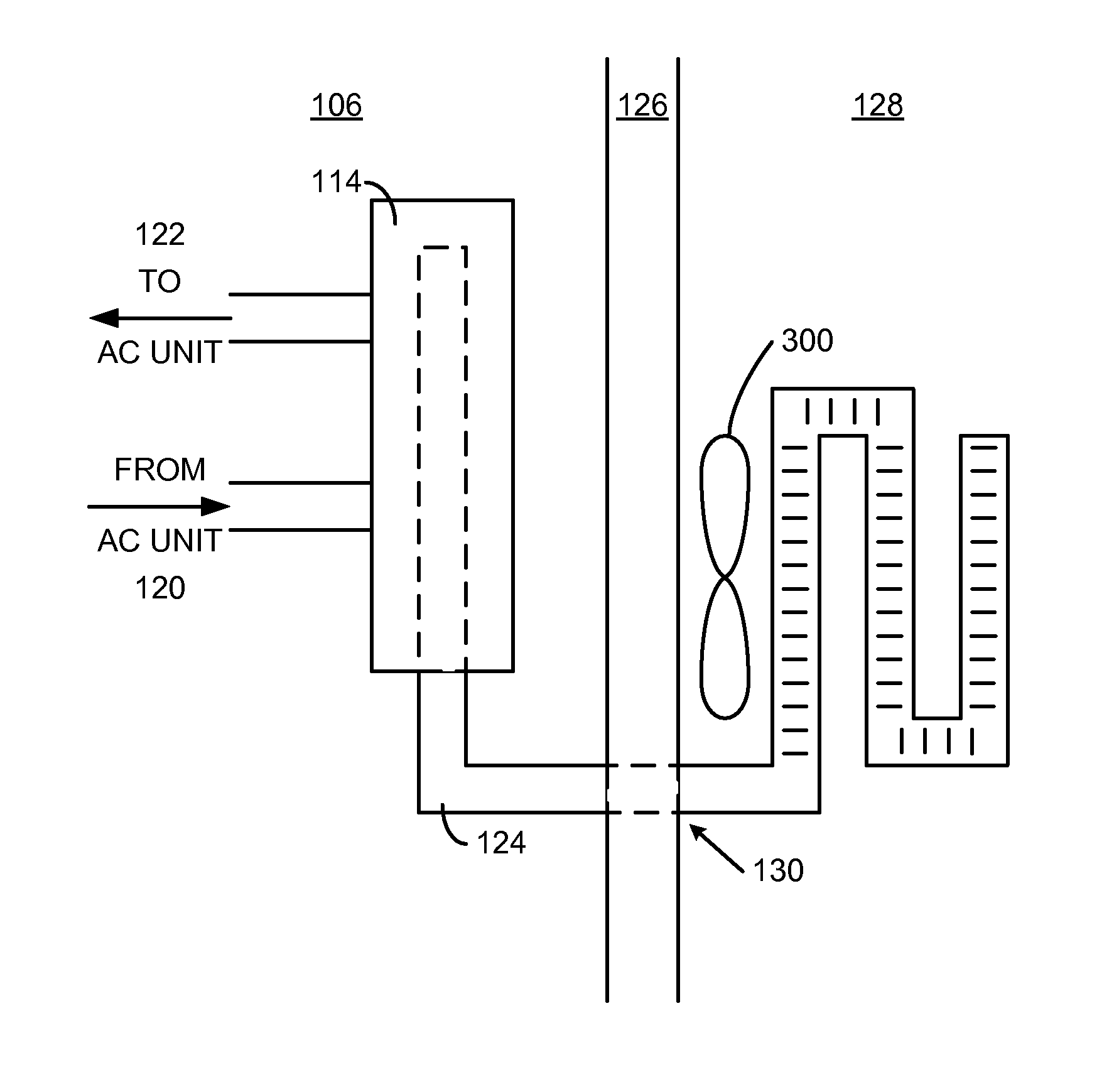Vehicle air conditioner
a technology for air conditioners and vehicles, applied in the field of vehicles, can solve the problems of reducing fuel economy, reducing the efficiency of vehicles, and reducing the maintenance cost of vehicles, so as to maximize the overall vehicle performance, and improve the effect of maintainability
- Summary
- Abstract
- Description
- Claims
- Application Information
AI Technical Summary
Benefits of technology
Problems solved by technology
Method used
Image
Examples
Embodiment Construction
[0029]While the making and using of various embodiments of the present invention are discussed in detail below, it should be appreciated that the present invention provides many applicable inventive concepts that can be embodied in a wide variety of specific contexts. The specific embodiments discussed herein are merely illustrative of specific ways to make and use the invention and do not delimit the scope of the invention. The discussion herein relates primarily to a modular air conditioning system, such as the OmniTherm AC-200, but it will be understood that the concepts of the present invention are applicable to non-military vehicles, such as commercial vehicles.
[0030]The present invention provides an air conditioning system that, among other things, is more efficient and easy to install or remove than conventional air conditioning systems. The present invention utilizes existing vehicle subsystems such as the engine coolant and on-board electrical or hydraulic systems to maximi...
PUM
 Login to View More
Login to View More Abstract
Description
Claims
Application Information
 Login to View More
Login to View More - R&D
- Intellectual Property
- Life Sciences
- Materials
- Tech Scout
- Unparalleled Data Quality
- Higher Quality Content
- 60% Fewer Hallucinations
Browse by: Latest US Patents, China's latest patents, Technical Efficacy Thesaurus, Application Domain, Technology Topic, Popular Technical Reports.
© 2025 PatSnap. All rights reserved.Legal|Privacy policy|Modern Slavery Act Transparency Statement|Sitemap|About US| Contact US: help@patsnap.com



